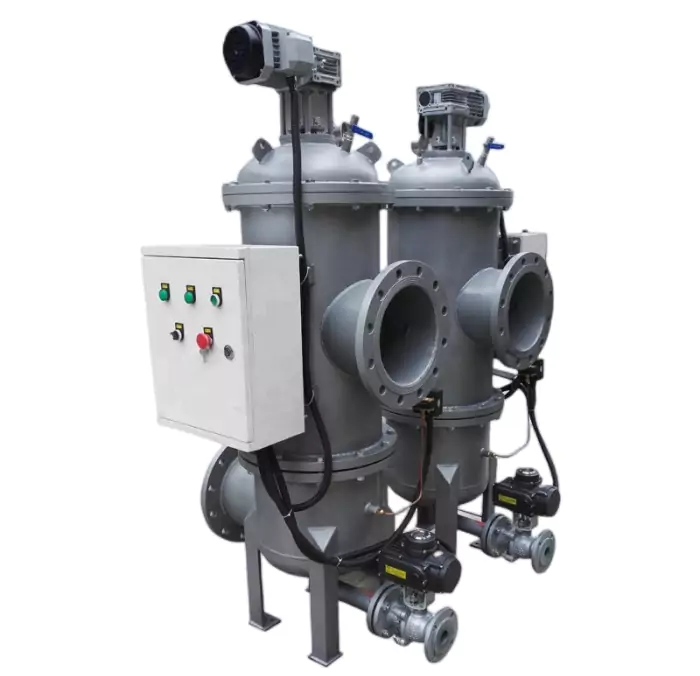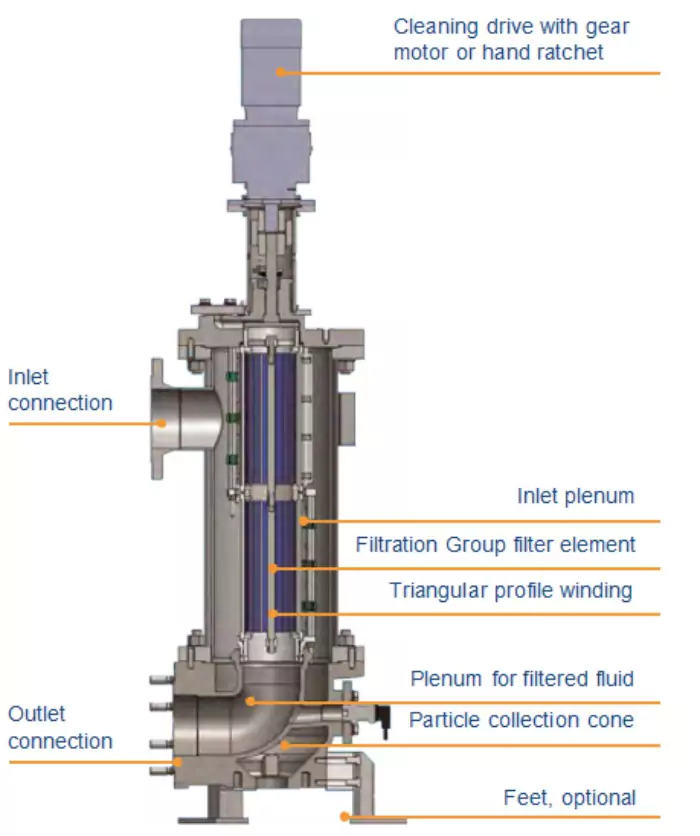Best Practices for Maintaining an Auto Backwash Filtration System: A Complete Guide

Introduction
In industries where liquid purity is crucial, keeping filtration systems in top condition is essential for smooth operations and long-term efficiency. An auto backwash filtration system is a game-changer—it automatically cleans itself, reducing manual intervention while maintaining optimal filtration performance. However, like any equipment, it needs regular maintenance to function at its best.
Neglecting maintenance can lead to clogging, reduced efficiency, and even system failure, which can be costly. In this guide, we’ll walk you through practical and easy-to-follow maintenance tips to keep your auto backwash filtration system running smoothly for years to come.

What is an Auto Backwash Filtration System?
Before diving into maintenance, let’s quickly recap how an auto backwash filtration system works.
These systems remove contaminants from liquids using a specialized filter media. Once the filter becomes clogged, the system detects a pressure drop and triggers a reverse flow (backwash) to clean itself. This ensures continuous operation without frequent manual cleaning.
Key Components:
- Filter Media: Captures and holds impurities.
- Backwash Valve: Directs the liquid flow during cleaning cycles.
- Sensors: Detect clogging and initiate backwashing when necessary.
- Pump: Ensures consistent liquid flow for effective filtration.
Understanding these components helps in identifying and resolving issues before they escalate.
Regular Inspections: Catch Issues Early
Routine checks help detect minor problems before they cause serious damage.
- Filter Media – Inspect for blockages, wear, or degradation.
- Backwash Valve – Ensure smooth operation and check for leaks.
- Sensors & Controls – Verify accurate readings and timely activation of backwash cycles.
- Pump Performance – Listen for unusual noises, check for leaks, and ensure steady pressure.
✔ Pro Tip: Set a maintenance schedule to perform inspections at regular intervals to avoid unexpected failures.
Optimize Backwashing for Efficiency
Efficient backwashing prevents clogging and maximizes system performance.
- Adjust Backwash Frequency – Too frequent backwashing wastes water, while infrequent cycles lead to clogging.
- Monitor Pressure Differentials – High pressure drop indicates a clogged filter requiring immediate attention.
- Check Valve Operation – Ensure backwash valves open and close properly to maintain flow efficiency.
✔ Pro Tip: Follow manufacturer guidelines to determine the ideal backwash cycle for your system.
Maintain System Components
Regular maintenance of key components extends their lifespan and keeps your system running smoothly.
- Inspect Seals & Gaskets – Replace worn-out seals to prevent leaks.
- Check Pipe Connections – Tighten loose fittings and look for corrosion.
- Lubricate Moving Parts – Reduce friction and wear on mechanical components.
✔ Pro Tip: Use only high-quality OEM-approved replacement parts for better durability and efficiency.
Monitor System Performance
Tracking system performance helps detect inefficiencies and prevents major breakdowns.
- Log Pressure & Flow Data – Identify patterns that indicate filter clogging or pump inefficiency.
- Calibrate Sensors Regularly – Ensure accurate readings for optimal backwash cycles.
- Perform Functional Tests – Run test cycles to confirm smooth operation.
✔ Pro Tip: Keep a maintenance log to track inspections, repairs, and performance metrics for future reference.
By following these best practices, you can enhance the longevity, reliability, and efficiency of your auto backwash filtration system.
Clean the Filters: Maintain Maximum Efficiency
Even though the system backwashes automatically, occasional manual cleaning is essential.
- How to Clean: Use a soft brush and clean water to remove stubborn debris.
- What to Avoid: Stay away from harsh chemicals that can damage the filter media.
- Why It Matters: A clean filter ensures better contaminant removal and extends its lifespan.
✔ Pro Tip: If you notice excessive clogging despite regular backwashing, it may be time to replace the filter media.
Monitor Liquid Flow & Pressure: Optimize Performance
Pressure fluctuations can indicate a clog or mechanical issue.
- Signs of Trouble: Low or inconsistent pressure may point to a clogged filter, pump issue, or faulty backwash valve.
- Quick Fix: Check pressure gauges regularly and clean or replace clogged components.
✔ Pro Tip: Keep a record of pressure readings to track changes over time and spot issues early.
Adjust Backwash Frequency: Balance Performance & Resource Use
Backwashing too often wastes water and energy, while infrequent backwashing leads to clogging.
- How to Adjust: Monitor liquid quality and contamination levels, then fine-tune the backwash cycle.
- Why It Matters: Proper settings prevent unnecessary wear and tear, improving efficiency.
✔ Pro Tip: Follow the manufacturer’s recommendations but tweak as needed based on real-time system performance.
Lubricate Moving Parts: Reduce Wear and Tear
An auto backwash filtration system contains several moving parts, such as valves, motors, and pumps, which need to be properly lubricated to prevent excessive wear.
- When to Lubricate: Follow the manufacturer’s guidelines for lubrication. Typically, lubrication should be done every few months or as needed.
- Why It’s Essential: Lubricating the moving parts reduces friction, extends the life of critical components, and ensures smooth operation of the system.
✔ Pro Tip: Use high-quality lubricants suitable for your filtration system to avoid premature part failure.
Check for Leaks: Prevent Liquid Loss & Maintain Efficiency
Leaks reduce system efficiency and waste valuable liquid resources.
- What to Inspect: Seals, gaskets, and connections for cracks, wear, or looseness.
- How to Fix: Tighten connections and replace damaged seals.
- Preventive Measures: Use high-durability gaskets and ensure proper installation to prevent recurring leaks.
✔ Pro Tip: Conduct visual inspections weekly and take immediate action if you spot a leak.
Replace Worn Components: Ensure Reliable Operation
Over time, some parts will wear out and need replacement.
- Filter Media: Change when it becomes too clogged or damaged.
- Backwash Valve & Sensors: Replace if they start malfunctioning.
- Pump: Swap out if it shows signs of performance decline.
- Electrical Components: Ensure wiring and connections remain intact and replace any corroded parts.
✔ Pro Tip: Stock spare parts so you can quickly replace any failing components without downtime.
Track Your Maintenance: Stay Organized & Proactive
Keeping a maintenance log helps track system performance and prevents recurring issues.
- What to Record: Inspections, cleaning dates, pressure readings, repairs, and replacements.
- Why It Helps: Identifies trends, helps troubleshoot problems, and ensures timely maintenance.
- Digital Tracking: Use software or apps to set reminders and maintain historical data.
✔ Pro Tip: Use digital logs or maintenance apps to set reminders and avoid missing scheduled maintenance.
Conclusion
A well-maintained auto backwash filtration system ensures cleaner liquids, higher efficiency, and reduced operational costs. By following these best practices—regular inspections, proper cleaning, monitoring pressure, and timely part replacements—you can maximize your system’s lifespan and performance.
Start implementing these maintenance tips today and keep your liquid filtration system operating at peak efficiency!
Need Expert Assistance? We’re Here to Help!
At Vesselex, we know how important an efficient liquid filtration system is for your operations. Whether you need routine maintenance, troubleshooting, or spare parts, our team is ready to assist you.
- Expert Consultation to optimize system performance.
- Scheduled Maintenance to prevent costly breakdowns.
- Component Replacements to ensure smooth, uninterrupted operation.
Reach out to us today—we’re here to keep your system running at its best!


